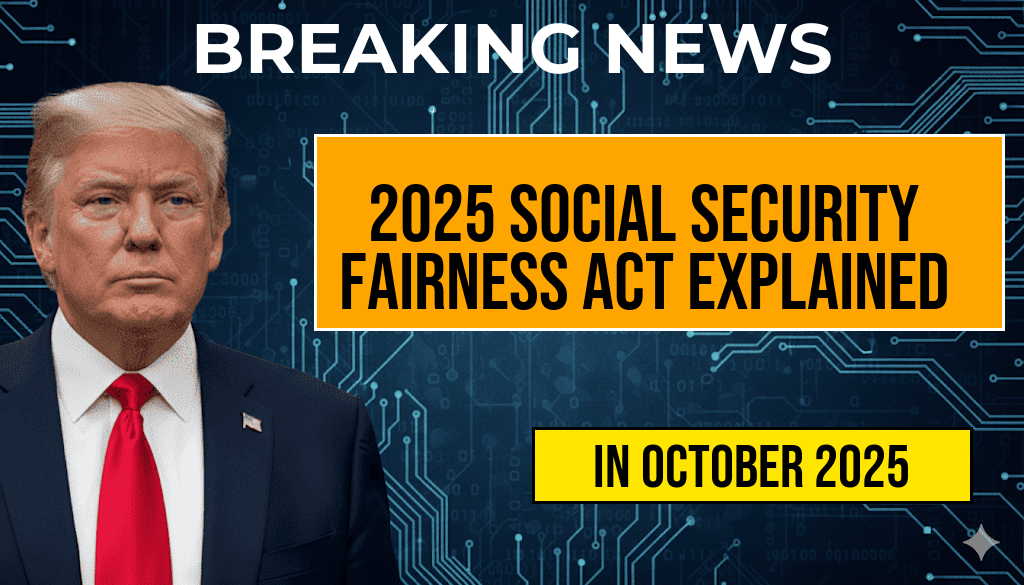The 2025 Social Security Fairness Act is poised to bring significant changes to the Social Security landscape in the United States, aiming to address long-standing issues of equity within the system. As millions of Americans rely on Social Security benefits for their livelihood, understanding the eligibility criteria, payment dates, and check amounts is crucial. The proposed legislation addresses disparities that have affected certain groups of beneficiaries, particularly those who have faced inequities due to the Windfall Elimination Provision (WEP) and Government Pension Offset (GPO). This article provides a detailed overview of the Act, including who qualifies, when payments are disbursed, and how much beneficiaries can expect to receive.
Eligibility Criteria for the 2025 Social Security Fairness Act
The eligibility for benefits under the 2025 Social Security Fairness Act focuses on several key factors:
- Age Requirements: Applicants must be at least 62 years old to begin receiving retirement benefits, while disability benefits are available to those who can no longer work due to illness or injury.
- Work Credits: Beneficiaries must have earned a minimum of 40 work credits, which typically requires at least 10 years of employment.
- Residency: Applicants must be U.S. citizens or legal residents, with some provisions for certain non-citizens based on their work history.
- Impact of WEP and GPO: The Act aims to mitigate the effects of the WEP and GPO on pensioners who have contributed to both public and private retirement systems.
Payment Dates for Social Security Benefits
Understanding the payment schedule is essential for beneficiaries to plan their finances effectively. Payments are generally distributed on a monthly basis, with specific dates determined by the beneficiary’s birth date:
| Birth Date | Payment Date |
|---|---|
| 1st – 10th | 2nd Wednesday of the month |
| 11th – 20th | 3rd Wednesday of the month |
| 21st – 31st | 4th Wednesday of the month |
For those who receive Supplemental Security Income (SSI), payments are distributed on the first day of each month.
Check Amounts Under the 2025 Social Security Fairness Act
The amount of benefits that individuals can expect to receive is determined by their work history and the contributions made to the Social Security system. The 2025 Social Security Fairness Act introduces adjustments to ensure fairer distribution:
- Base Benefit Calculation: The base amount is calculated based on a worker’s highest 35 years of earnings, with inflation adjustments factored in to protect purchasing power.
- Minimum Benefits: The Act proposes raising the minimum benefits for long-term workers who have contributed consistently to the system.
- Cost-of-Living Adjustments (COLA): Annual adjustments will continue to be applied, ensuring that benefits keep pace with inflation.
Impact of the 2025 Social Security Fairness Act
The potential impact of the 2025 Social Security Fairness Act could be significant for many beneficiaries. By addressing the inequities tied to the WEP and GPO, the legislation aims to provide a fairer system for those who have dedicated their careers to public service while also contributing to Social Security. This could mean increased financial stability for teachers, police officers, and other public employees who have often faced reduced benefits due to these provisions.
Further Information and Resources
For those interested in learning more about the 2025 Social Security Fairness Act and its implications, additional resources can be found at:
- Wikipedia: Social Security in the United States
- Forbes: Understanding Social Security Benefits
- Social Security Administration: Retirement Benefits
As discussions surrounding the 2025 Social Security Fairness Act continue, beneficiaries and advocates alike are hopeful that these reforms will lead to a more equitable Social Security system that better serves the diverse needs of American citizens.
Frequently Asked Questions
What is the 2025 Social Security Fairness Act?
The 2025 Social Security Fairness Act is a legislative proposal aimed at addressing disparities in the Social Security system, ensuring fairer benefits for retirees and disabled individuals.
Who is eligible for benefits under the 2025 Social Security Fairness Act?
Eligibility for benefits under the 2025 Social Security Fairness Act typically includes retirees, individuals with disabilities, and certain survivors, but specific criteria may vary based on income and work history.
When will payments be issued under the 2025 Social Security Fairness Act?
Payment dates for the 2025 Social Security Fairness Act are expected to follow the standard monthly schedule, with benefits generally disbursed on designated days of the month depending on the recipient’s birth date.
How will the check amounts change with the 2025 Social Security Fairness Act?
The 2025 Social Security Fairness Act proposes to adjust check amounts to better reflect cost-of-living increases and provide fair compensation for all beneficiaries, potentially resulting in higher monthly payments.
Where can I find more information about the 2025 Social Security Fairness Act?
For more information, individuals can visit the official Social Security Administration website or consult trusted financial resources that provide updates on the 2025 Social Security Fairness Act and its implications.











